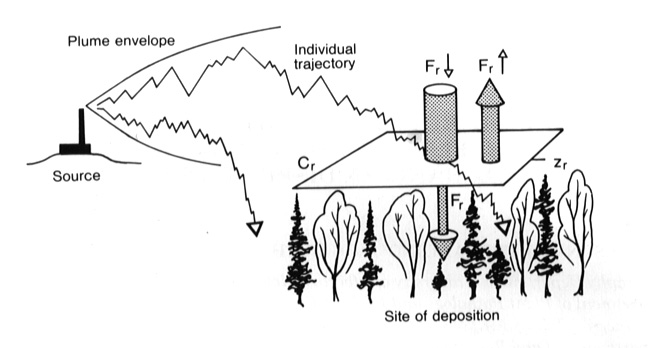 Realizable LS Models
Realizable LS Models  Realizable LS Models
Realizable LS Models Proceeding more formally to investigate these numerical "issues," Wilson and Flesch (1993) showed how to write a discrete-time LS model that is "complete" (contains reflection; unambiguous order of operations) and how to deduce the implied transition density p, defined such that
p(z2,w2,t2 ; z1,w1,t1) dz2 dw2
is the probability of transition during interval (t2-t1) from (phase space) point (z1, w1) into volume (z2 ± ½ dz2, w2 ± ½ dw2). In terms of p, the well-mixed condition can be expressed as a requirement that the transition density of the LS model should guarantee the property
PE(z,w) = INTEGRAL { p(z,w,dt;z0,w0,0) PE(z0,w0) dz0 dw0 }
where PE is known (fixed), and the integral extends over the allowed region of z-w phase space.
Flesch and Wilson proved by means of this equation that perfect reflection is exactly valid, if applied to bound Gaussian homogeneous turbulence, but argued that no reflection scheme can exactly satisfy the w.m.c. when applied at a location where the pdf for the normal velocity is asymmetric, or locally-inhomogeneous. Subsequently others (another & Thomson) have provided what they claim IS a valid (well-mixed) reflection scheme for more-general turbulence. Since near a boundary there will usually be a region where the statistical character of the flow is anyway unknown, one is free to choose profiles of the flow statistics at the boundary that redound to the success of a reflection algorithm.